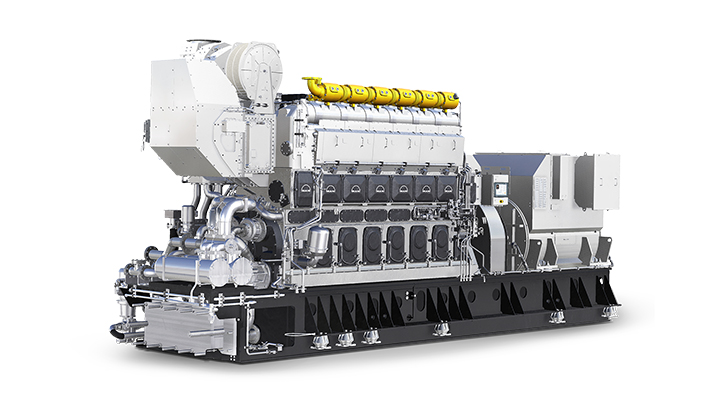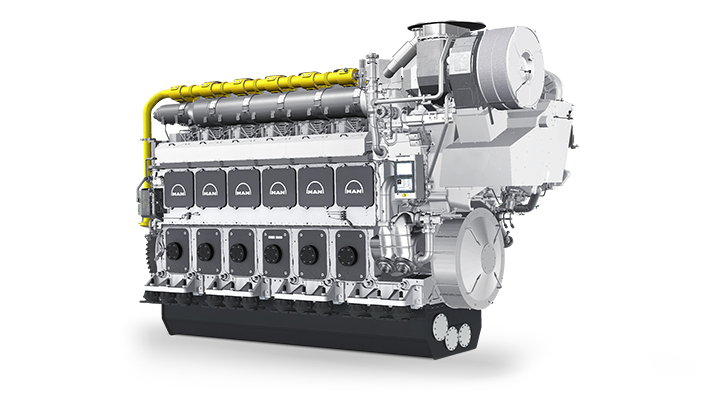The growing LNG cargo sector
The supply of liquefied natural gas (LNG) is set to continue growing in the coming years as the switch from coal to gas gathers pace. Industries need to cut carbon emissions and LNG is a useful bridging fuel on the road to net zero. For shipping, the switch to LNG marks an important first step towards climate-neutral operation. Of course, LNG is not only transported by sea but also partly processed at sea. All this raises demand for LNG carriers (LNGCs), floating storage and regasification units (FSRUs), and floating liquified natural gas facilities (FLNGs).
Future-proof four-stroke engines for changing conditions
While demand for LNG carriers is high, so are the standards that these very special vessels must attain. As well as answering safety concerns, LNG cargo vessels must operate efficiently to maintain profitability while complying with the strict IMO environmental regulations. That still leaves uncertainty over future fuel developments. Our solution builds on the flexibility of our dual-fuel engines, highly efficient methane slip reduction techniques, and innovative concepts like the Dual-Fuel, Electric+ (DFE+) propulsion system.
LNG cargo four-stroke engine portfolio
Future-proof dual-fuel efficiency is the common factor uniting the MAN 35/44DF CD auxiliary genset and the MAN 49/60DF propulsion engine with DFE+. Both engines offer small footprints, high power density, and high configuration flexibility, making them easy to integrate in different LNG cargo vessel types.
MAN 35/44DF CD genset with zero compromises
The MAN 35/44DF CD offers superior efficiency and reduced methane slip, leading to decreased emissions and a more environmentally friendly footprint. With 560 kW per cylinder, the engine yields the highest power output in its segment. Its reliable technology reduces daily maintenance and maximizes time between overhauls (TBOs) while ensuring safe operation in all fuel modes.


MAN 49/60DF as part of the DFE+ propulsion system
The MAN 49/60DF has set new benchmarks in efficiency with 170.3 g/kWh liquid fuel consumption at 85% MCR and 6,990 kJ/kWh gas consumption at 85% MCR. With its low methane slip, it meets emissions standards without compromising on efficiency or performance. Integrated in a DFE+ propulsion system, the MAN 49/60DF helps lower emissions and fuel consumption thanks to increased operational flexibility, thus another path for compliance with future emission regulations.
Dual-Fuel, Electric+ increases cargo capacity and lowers fuel costs
MAN PrimeServ is always ready to help
From planning to maintenance, from digital to retrofits: MAN PrimeServ service solutions care for your assets.
Plan your LNG vessel with confidence
Get in touch with our LNG engine experts for in-depth advice on all your power-related questions.
